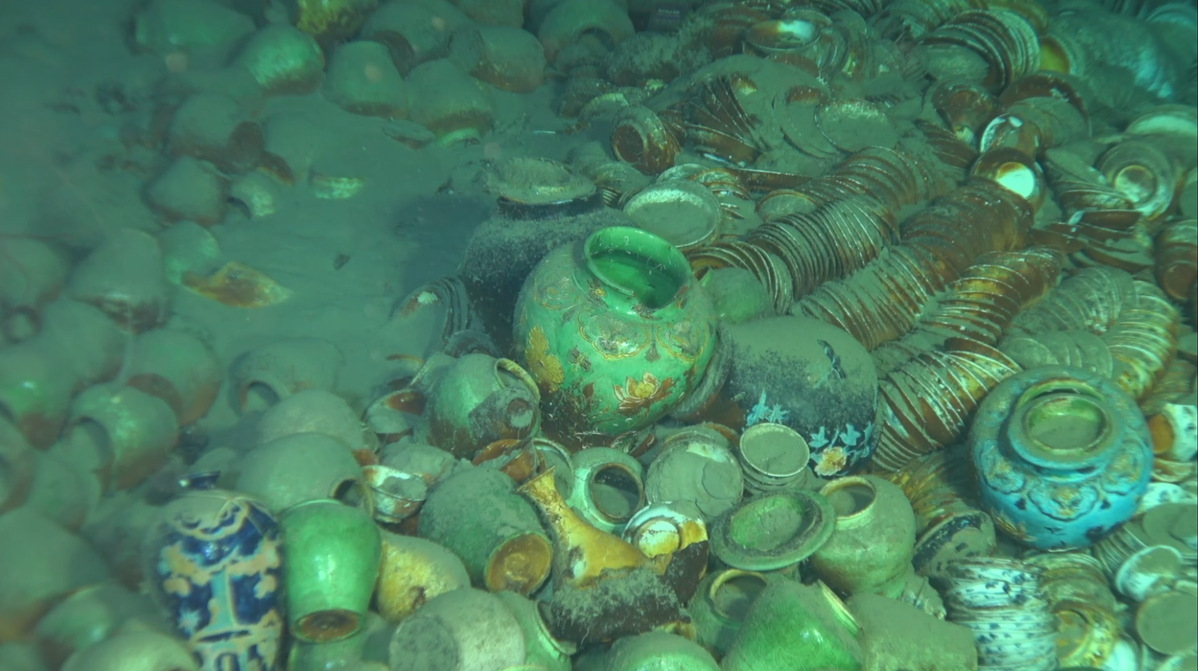Two ancient shipwrecks discovered in South China Sea


Two ancient shipwrecks, probably from the mid-Ming Dynasty (1368-1644), were found from about 1,500 meters under the sea level in South China Sea, the National Cultural Heritage Administration announced in the coastal city of Sanya, Hainan province, on Sunday.
A scientific research team of Institute of Deep-sea Science and Engineering with the Chinese Academy of Sciences first found the two shipwrecks on a continental slope in October. It is also the first time that China discovered a site of large-scale ancient shipwreck in deep sea.
The two are named by researchers as Northwest Continental Slope No 1 and No 2 Shipwrecks in South China Sea.
According to Yan Yalin, director of archaeology department of the National Cultural Heritage Administration, preliminary investigation showed relics from the No 1 shipwreck were scattered across about a 10,000-square-meter area. It is estimated that over 100,000 cultural relics, mainly porcelains, are sealed on the spot. Most of the shipwreck is still buried in sand, and some parts are covered by a 3-odd-meter-thick layer of relics.
On the No 2 shipwreck, about 20 kilometers away, numerous processed wooden logs are neatly placed, together with small number of ceramics.
Based on some porcelains that were salvaged from the sites, the No 1 shipwreck was probably from reign of Zhengde (1505-21), and the No 2 was from reign of Hongzhi (1488-1505).
"The well-reserved relics are of high historical, scientific, and artistic values," Yan said. "It can be a world-class archaeological discovery in deep sea.
"The findings are key evidences of ancient Maritime Silk Road and is a major breakthrough studies for history of Chinese overseas trade, navigation, and porcelains," he added.
Products of Jingdezhen, Jiangxi province and Longquan Kiln in present-day Zhejiang province, both key hubs for porcelain making and export of ancient China, dominated the discovered porcelains on the No 1 site.
According to a video clip publicly revealed by its research team on Sunday, varieties including blue-and-white porcelains, celadons, and ceramics with green glaze were found on the site.
While archaeologists speculated the wooden logs on the No 2 shipwreck may indicate its nature of import trade as timber was recorded on the list of imports in ancient Chinese documentation of its time.
Tang Wei, director of the National Centre for Archaeology, which is affiliated to the cultural heritage administration, said new discoveries provided key references for understanding changing historical trade routes across the South China Sea.
"Discovery of inbound and outbound ancient ships in the same area demonstrated significance of this route," Tang said. "It helped studies on reciprocal flow of Maritime Silk Road."
The first-round detailed underwater investigation of the sites was officially launched on Saturday, and will last until June.


















